Properties of Concrete Prepared with Silane Coupling Agent-Impregnated Coral Aggregate and Coral Concrete
Abstract
:1. Introduction
2. Experimental
2.1. Materials
2.2. Method
2.2.1. Crush Index
2.2.2. Water Absorption
2.2.3. Slump
2.2.4. Microhardness
2.2.5. Compressive Strength
2.2.6. SEM
3. Structure and Performance of SCA-Modified Coral Coarse Aggregate
3.1. Surface Modification Method
3.2. The Water Absorption and Crushing Indicator


3.3. The Performance of Treated Coral Concrete
4. Conclusions
Author Contributions
Funding
Institutional Review Board Statement
Informed Consent Statement
Data Availability Statement
Conflicts of Interest
References
- Scholer, C.H. Examination and Study of Certain Structures in the Pacific Ocean Area; Contract NBy-3171, USN CEL; USN Civil Engineering Laboratory: Port Hueneme, CA, USA, 1959. [Google Scholar]
- Yuan, Y.F. Mix Design and Property of Coral Aggregate Concrete; Nanjing University of Aeronautics and Astronautics: Nanjing, China, 2015. [Google Scholar]
- Howdyshell, P.A. The Use of Coral as an Aggregate for Portland Cement Concrete Structures; Army Construction Engineering Research Laboratory: Champaign, IL, USA, 1974. [Google Scholar]
- Zhang, S.Z. Experimental Study on the Fatigue Property and Microscopic Mechanism of Coral Concrete; Guangxi University: Nanning, China, 2012. [Google Scholar]
- Wang, Y.G. The Feasibility of Coral Concrete Application in the Port Industry. Port. Waterw. Eng. 1988, 9, 46–48. [Google Scholar]
- Lu, B.; Liang, Y.B. Experimental Research on Coral Sea Sand Concrete I. Mari. Sci. Bull. 1993, 5, 69–74. [Google Scholar]
- Lu, B.; Li, Q.G.; Huang, S.J. The research and practice of water—Coral sand cement concrete, Guangdong Build. Guangdong Build. Mater. 1997, 4, 8–10. [Google Scholar]
- Li, W.F.; Guan, J.; Ma, S.H. Application of sea sand and coral reefs in the production of concrete mixed with seawater. Concrete 2016, 5, 148–152. [Google Scholar]
- Chen, Z.L.; Sun, G.F.; Tang, Y.N.; Liu, Y.N. Study on Applications of Concretes From Coral Reef Sand Mixed with Seawater for Patching-up in Reef Engineering. Coas. Eng. 2008, 27, 60–69. [Google Scholar]
- Liu, J.; Ou, Z.; Peng, W.; Guo, T.; Deng, W.; Chen, Y. Literature Review of Coral Concrete. Arab. J. Sci. Eng. 2018, 43, 1529–1541. [Google Scholar] [CrossRef]
- Dong, Q.; Huang, B.; Shu, X. Rubber modified concrete improved by chemically active coating and silane coupling agent. Constr. Build. Mater. 2013, 48, 116–123. [Google Scholar] [CrossRef]
- Li, G.; Wang, Z.; Leung, C.K.; Tang, S.; Pan, J.; Huang, W.; Chen, E. Properties of rubberized concrete modified by using silane coupling agent and carboxylated SBR. J. Clean. Prod. 2016, 112, 797–807. [Google Scholar] [CrossRef]
- Li, W.; Huang, Z.; Wang, X.C.; Wang, J.W. Proportion of Tensile Strength and Compressive Strength of the Crumb Rubber Concrete Modified by Silane Coupling Agent. Adv. Mater. Res. 2014, 953–954, 1520–1523. [Google Scholar] [CrossRef]
- Li, W.; Huang, Z.; Wang, X.C.; Wang, J.W. Experimental Study on Comparison about the Modifiers of Rubber Cement Concrete. Appl. Mech. Mater. 2014, 670–671, 387–390. [Google Scholar] [CrossRef]
- Li, W.; Huang, Z.; Wang, X.C.; Zang, Z.S. Experimental Study on the Mechanical Properties of the Crumb Rubber Concrete Modified by Silane Coupling Agent. Adv. Mater. Res. 2014, 919–921, 1920–1923. [Google Scholar] [CrossRef]
- Guo, S.; Dai, Q.; Si, R.; Sun, X.; Lu, C. Evaluation of properties and performance of rubber-modified concrete for recycling of waste scrap tire. J. Clean. Prod. 2017, 148, 681–689. [Google Scholar] [CrossRef]
- Su, H.; Yang, J.; Ghataora, G.S.; Dirar, S. Surface modified used rubber tyre aggregates: Effect on recycled concrete performance. Mag. Concr. Res. 2015, 67, 680–691. [Google Scholar] [CrossRef] [Green Version]
- Mani, P.; Gupta, A.; Krishnamoorthy, S. Comparative study of epoxy and polyester resin-based polymer concretes. Int. J. Adhes. Adhes. 1987, 7, 157–163. [Google Scholar] [CrossRef]
- Mani, P.; Gupta, A.K.; Krishnamoorthy, S. Efficiency of some silane coupling agents and of the method of their application in polyester resin concrete. J. Mater. Sci. 1983, 18, 3599–3605. [Google Scholar] [CrossRef]
- Mani, P.; Gupta, A.K.; Krishnamoorthy, S. Some structural studies on polyester resin-concrete containing silane coupling agents. J. Mater. Sci. Lett. 1982, 1, 467–470. [Google Scholar] [CrossRef]
- Sood, R.; Krishnamoorthy, S.; Khandelwal, B. The effect of silane coupling agent and microfiller on the strength of phenol-formaldehyde resin concrete. Int. J. Cem. Compos. Light. Concr. 1984, 6, 93–98. [Google Scholar] [CrossRef]
- Gupta, A.; Mani, P.; Krishnamoorthy, S. Interfacial adhesion in polyester resin concrete. Int. J. Adhes. Adhes. 1983, 3, 149–154. [Google Scholar] [CrossRef]
- Chmielewska, B.; Czarnecki, L.; Sustersic, J.; Zajc, A. The influence of silane coupling agents on the polymer mortar. Cem. Concr. Compos. 2006, 28, 803–810. [Google Scholar] [CrossRef]
- Guo, M.; Tan, Y.; Zhang, R. Improvement of asphalt concrete moisture damage resistance using Saline Coupling Agent. In Proceedings of the ISAP Conference on Asphalt Pavements, Raleigh, NC, USA, 1–5 June 2014. [Google Scholar]
- Luo, B.Y.; Xiong, G.J.; Li, G.Y.; Li, Y.Q. Feature of silane coupling agent modified new to old concrete repair interfacial layer. J. Wuhan Univ. Technol. 2004, 5, 9–11. [Google Scholar]
- Ma, Y. Study on Increasing of Interfacial Bond Strength between Cement Paste and Aggregate. J. Build. Mater. 1999, 1, 29–31. [Google Scholar]
- Xiong, G. Primary Investigation on Modifying Mechanism of New to Old Concrete Repair Interfacial Layer by Using Silane Coupling Agent; Industrial Construction: Beijing China, 2005. [Google Scholar]
- Xiong, G.; Luo, B.; Wu, X.; Li, G.; Chen, L. Influence of silane coupling agent on quality of interfacial transition zone between concrete substrate and repair materials. Cem. Concr. Compos. 2006, 28, 97–101. [Google Scholar] [CrossRef]
- Li, Y.; Lu, X.; Feng, Y.; Xiong, G. Forming mechanism of granite/silane coupling agent/cement paste interface. Cailiao Yanjiu Xuebao/Chin. J. Mater. Res. 2007, 21, 140–144. [Google Scholar]
- Graf, R.T.; Koenig, J.L.; Ishida, H. The Influence of Interfacial Structure on the Flexural Strength of E-glass Reinforced Polyester. J. Adhes. 1983, 16, 97–113. [Google Scholar] [CrossRef]
- Ding, X.; Qi, J.; Fang, W.; Chen, M.; Chen, Z. Improvement on properties of recycled concrete with coarse ceramic vase aggregates using KH-550 surface treating technology. Eur. J. Environ. Civ. Eng. 2017, 24, 1–16. [Google Scholar] [CrossRef]
- Zhang, Y.; Guo, Q.; Xiaoping, J.I. Experimental Research on Asphalt Treated Recycled Aggregate. J. Build. Mater. 2016, 3, 584–589. [Google Scholar]
- Wang, G.; Kong, Y.; Shui, Z. Influence of surface treated metakaolin with coupling agent on the properties of concrete. Mater. Struct. 2013, 48, 261–267. [Google Scholar] [CrossRef]
- McBride, S.P.; Shukla, A.; Bose, A. Processing and characterization of a lightweight concrete using cenospheres. J. Mater. Sci. 2002, 37, 4217–4225. [Google Scholar] [CrossRef]
- Iorio, M.; Santarelli, M.; González-Gaitano, G.; Gonzalez-Benito, J. Surface modification and characterization of basalt fibers as potential reinforcement of concretes. Appl. Surf. Sci. 2018, 427, 1248–1256. [Google Scholar] [CrossRef]
- National Standard Management Committee of China. Common Portland Cement: GB175-2007; China Building Industry Press: Beijing, China, 2007. [Google Scholar]
- National Standard Management Committee of China. Pebble and Crushed Stone for Construction: GB/T 14685-2011; China Building Industry Press: Beijing, China, 2011. [Google Scholar]
- Ministry of Construction of the People’s Republic of China. Standard for Test Method of Performance on Ordinary Fresh Concrete: GB/T 50080-2002; China Building Industry Press: Beijing, China, 2002. [Google Scholar]
- Ministry of Construction of the People’s Republic of China. Standard for Test Method of Performance on Ordinary Fresh Concrete: GB/T 50081-2002; China Building Industry Press: Beijing, China, 2002. [Google Scholar]
- Liang, X.; Guo, X.D.; Wang, H.; Yu, X.S. The Effect and Characterization of Modified Asphalt by Coupling Agent. Appl. Mech. Mater. 2011, 105–107, 1773–1778. [Google Scholar] [CrossRef]
- Ma, Z.; Zhu, F.; Zhao, T. Effects of surface modification of silane coupling agent on the properties of concrete with freeze-thaw damage. KSCE J. Civ. Eng. 2018, 22, 657–669. [Google Scholar] [CrossRef]
- Skominas, R.; Gurskis, V.; Sadzevicius, R.; Damulevicius, V.; Radzevicius, A. Evaluation of cement mortar suitability for repairing concrete in hydraulic structures. KSCE J. Civ. Eng. 2017, 21, 2814–2820. [Google Scholar] [CrossRef]
- Shen, W.; Liu, Y.; Cao, L.; Huo, X.; Yang, Z.; Zhou, C.; He, P.; Lu, Z. Mixing design and microstructure of ultra high strength concrete with manufactured sand. Constr. Build. Mater. 2017, 143, 312–321. [Google Scholar] [CrossRef]
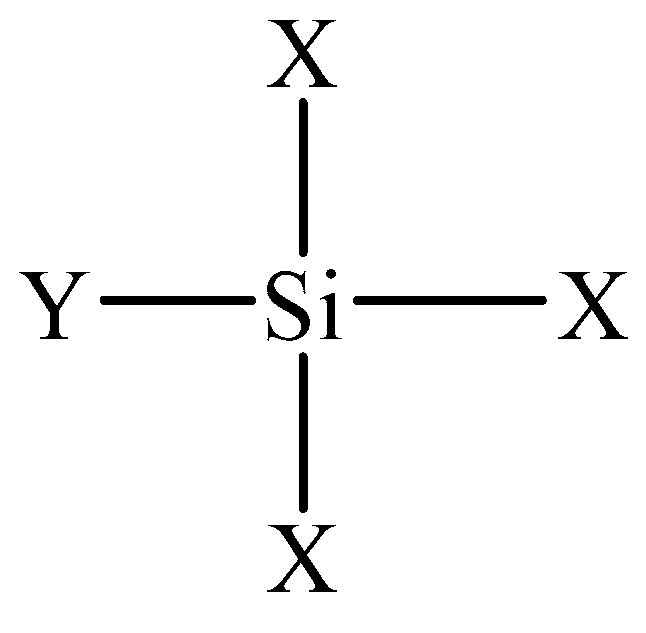
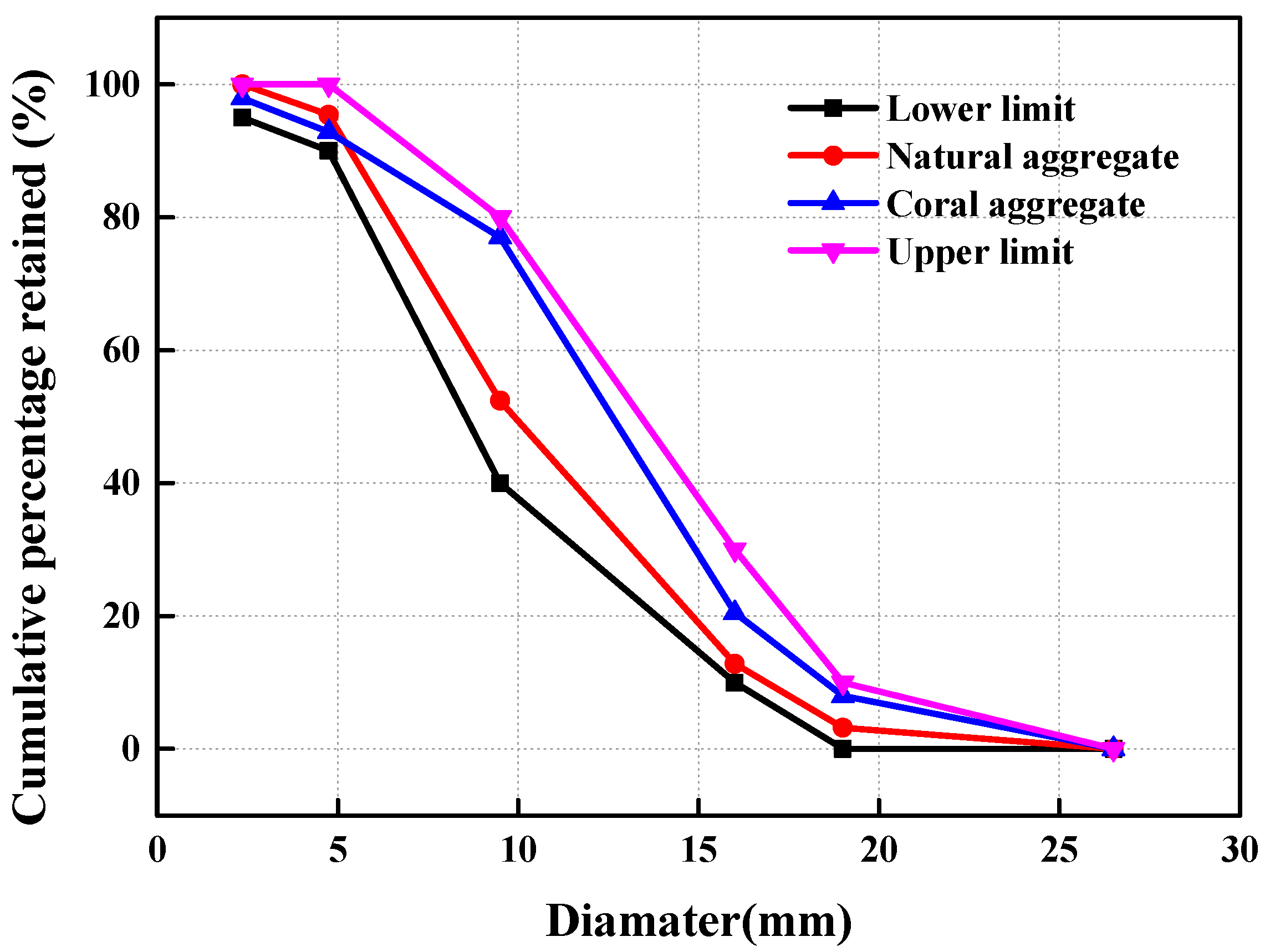
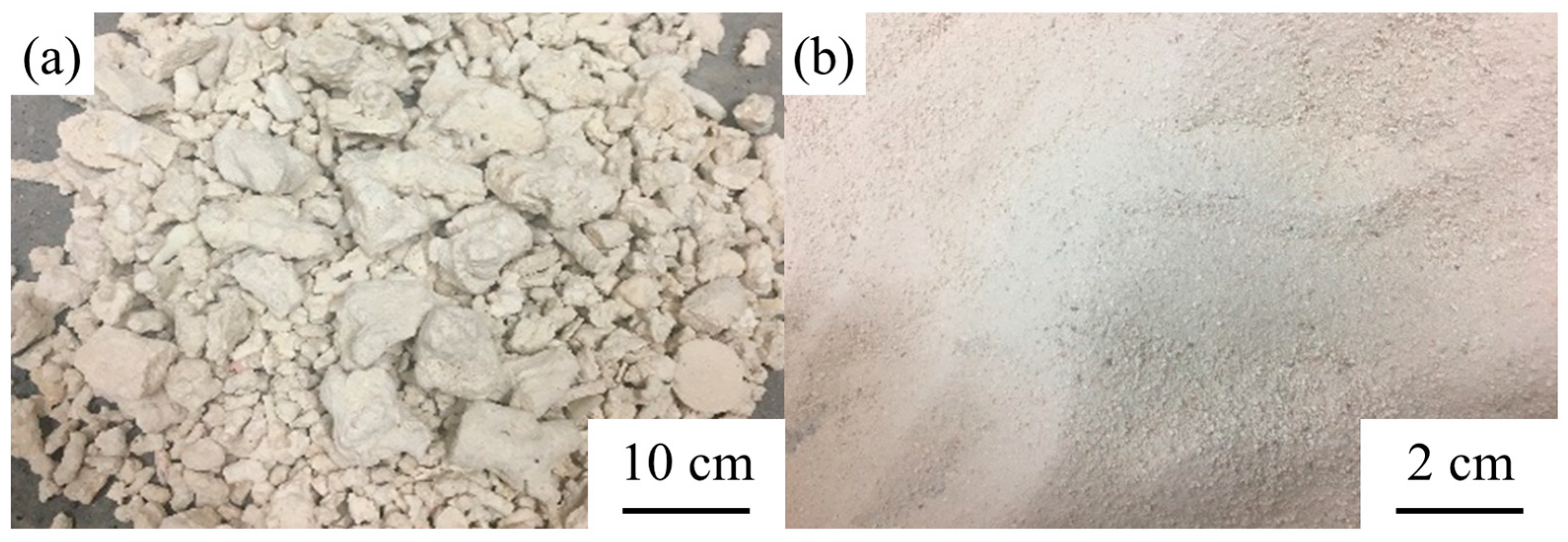


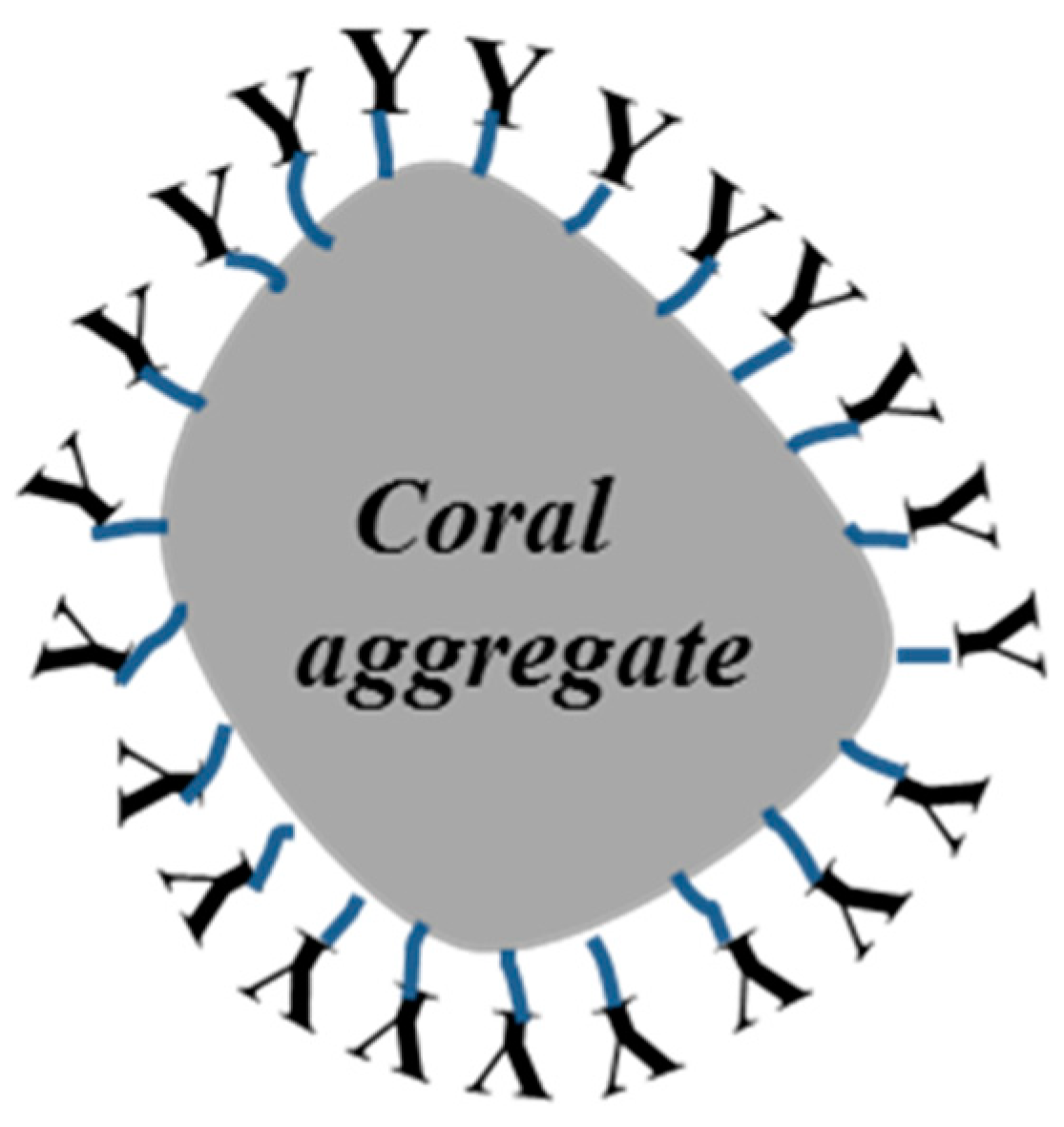
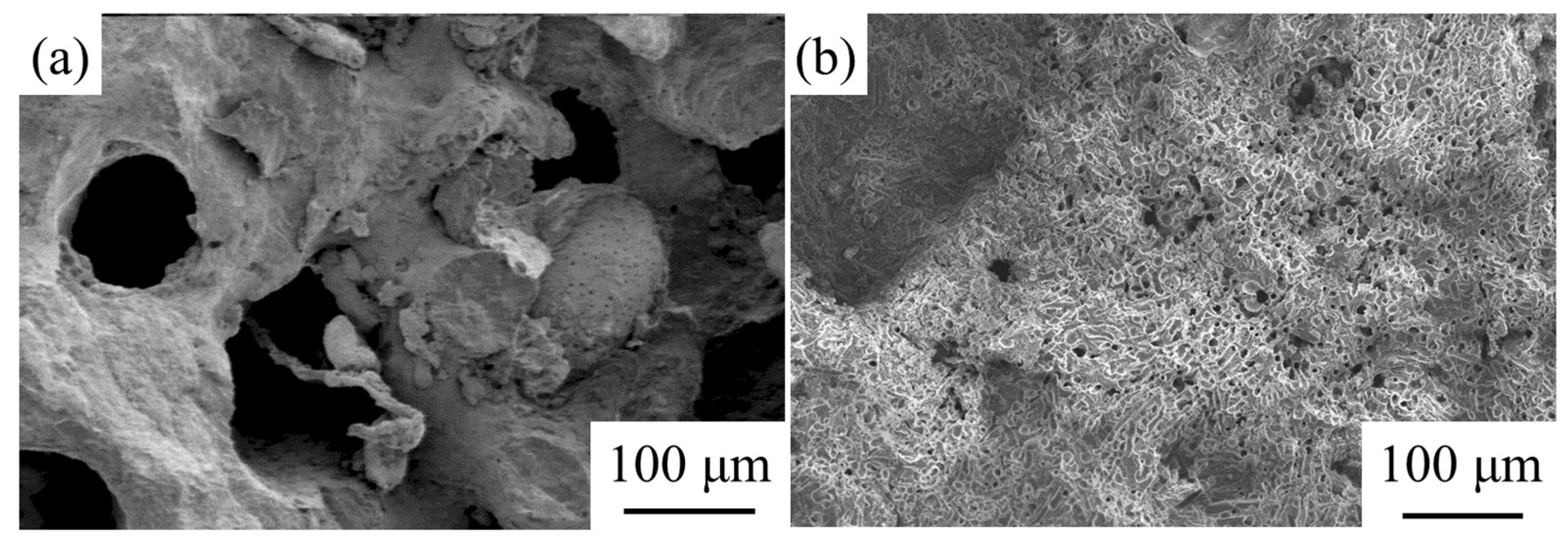

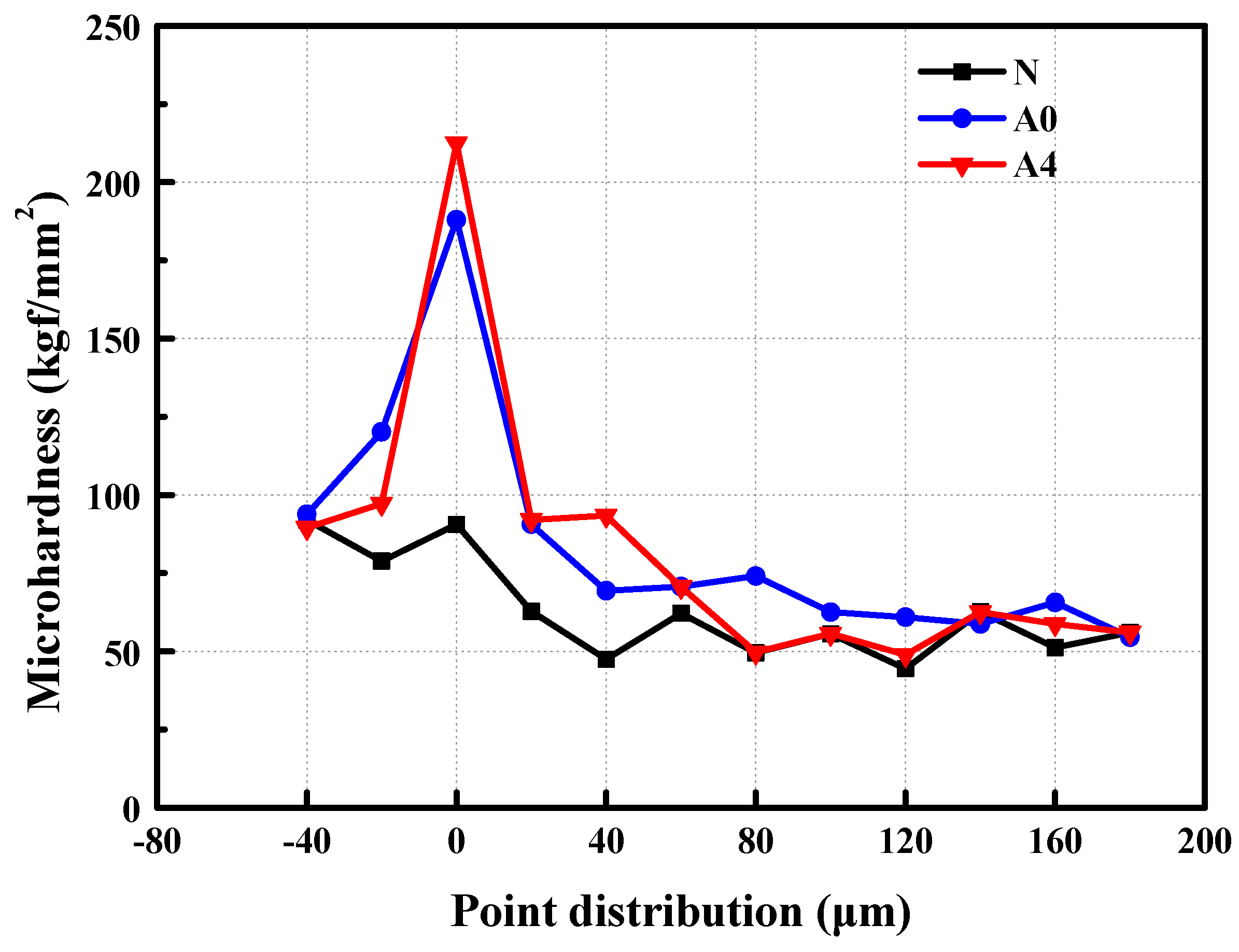
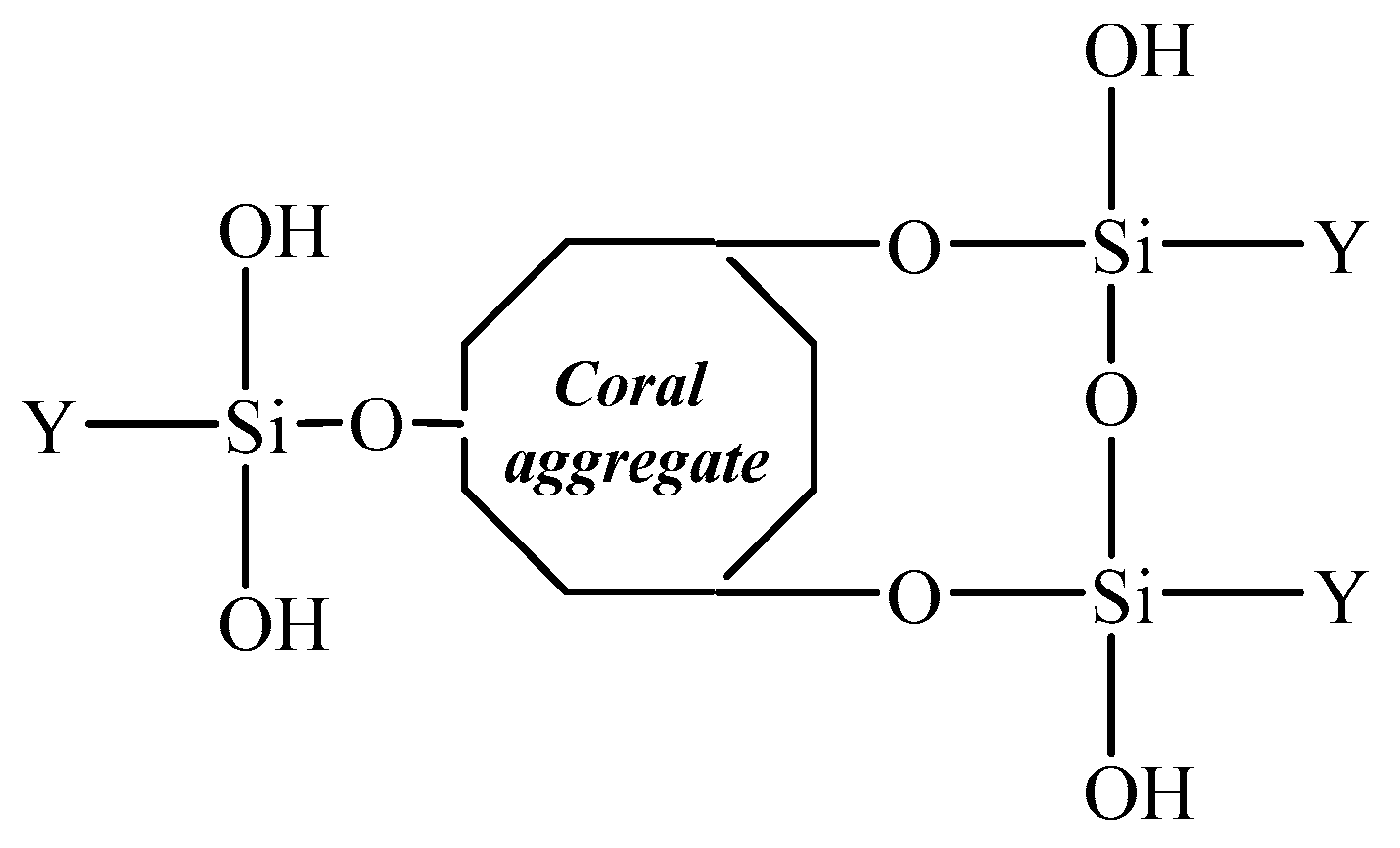
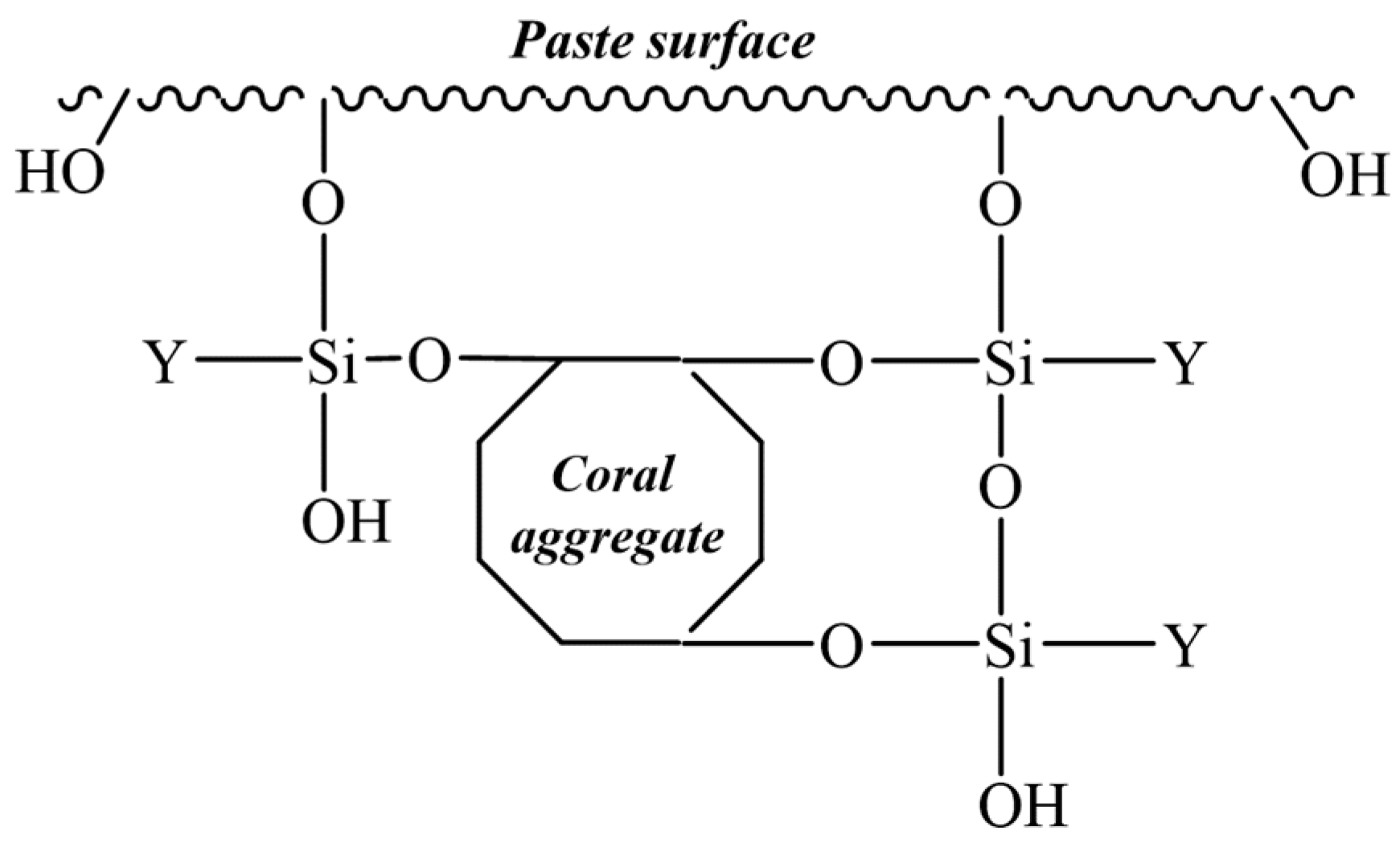

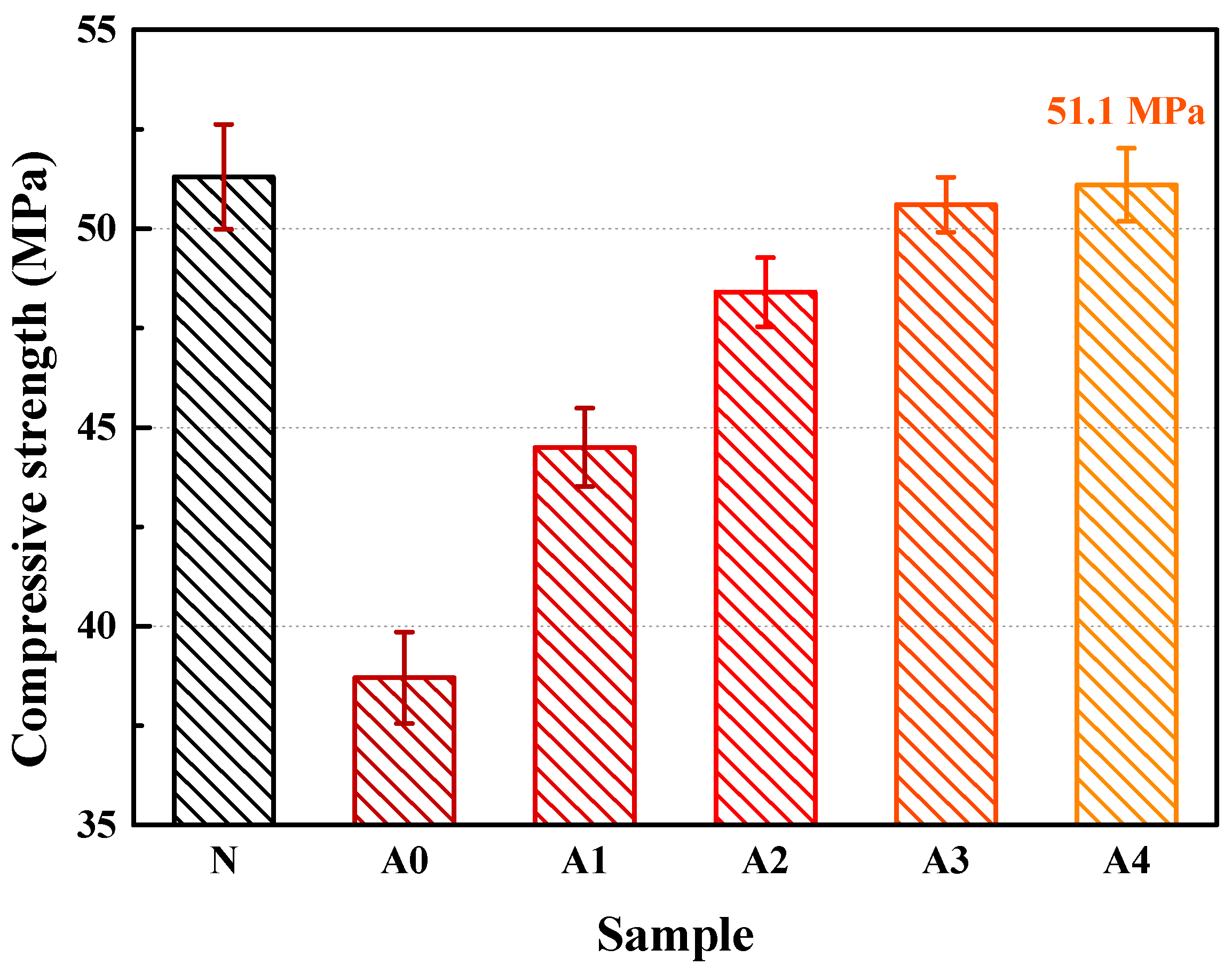
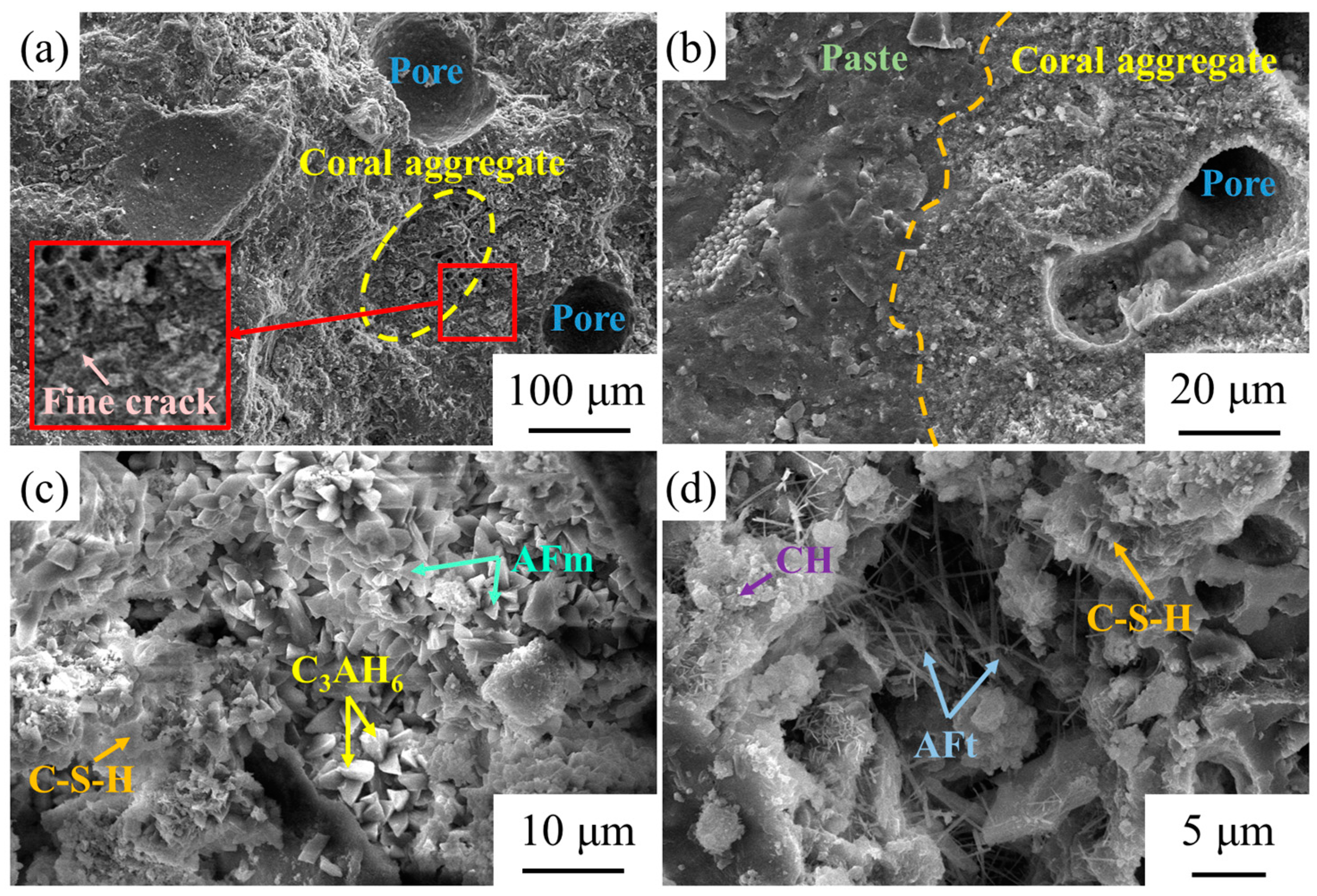
| Bore diameter (mm) | 26.5 | 19 | 16 | 9.5 | 4.75 | 2.36 |
| The cumulative triage (%) | 0 | 8 | 20.5 | 77 | 92.8 | 97.9 |
| Density (kg/m³) | Packing Density (kg/m³) | Close Packing Density (kg/m³) | Water Absorption Rate (%) | Porosity (%) | Crush Index (%) | Silt Content (%) | Chloride Ion Content (%) |
|---|---|---|---|---|---|---|---|
| 2335 ± 120 | 1264 ± 69 | 1380 ± 40 | 9 ± 1 | 49.1 ± 2.2 | 32 | 2.35 ± 0.15 | 0.074 ± 0.005 |
| Fineness Modulus | Density (kg/m³) | Packing Density (kg/m³) | Water Absorption Rate (%) | Silt Content (%) | Chloride Ion Content (%) |
|---|---|---|---|---|---|
| 2.44 ± 0.05 | 2500 ± 75 | 1115 ± 63 | 5 ± 1 | 0.50 ± 0.10 | 0.052 ± 0.003 |
| Boiling Point | Density | Refractive Index ND25 | Flash Point | Content | |
|---|---|---|---|---|---|
| KH-560 | 290 °C | 1.065 kg/m³ | 1.426 | 110 °C | 98% |
| Cement (kg/m3) | Aggregate (kg/m3) | Sand Dosage | Water (kg/m3) | Superplasticizer (kg/m3) |
|---|---|---|---|---|
| 500 | 750 | 36% | 200 | 2 |
Publisher’s Note: MDPI stays neutral with regard to jurisdictional claims in published maps and institutional affiliations. |
© 2021 by the authors. Licensee MDPI, Basel, Switzerland. This article is an open access article distributed under the terms and conditions of the Creative Commons Attribution (CC BY) license (https://creativecommons.org/licenses/by/4.0/).
Share and Cite
Liu, J.; Ju, B.; Yin, Q.; Xie, W.; Xiao, H.; Dong, S.; Yang, W. Properties of Concrete Prepared with Silane Coupling Agent-Impregnated Coral Aggregate and Coral Concrete. Materials 2021, 14, 6454. https://doi.org/10.3390/ma14216454
Liu J, Ju B, Yin Q, Xie W, Xiao H, Dong S, Yang W. Properties of Concrete Prepared with Silane Coupling Agent-Impregnated Coral Aggregate and Coral Concrete. Materials. 2021; 14(21):6454. https://doi.org/10.3390/ma14216454
Chicago/Turabian StyleLiu, Jinming, Boyu Ju, Qing Yin, Wei Xie, Haiying Xiao, Shanliang Dong, and Wenshu Yang. 2021. "Properties of Concrete Prepared with Silane Coupling Agent-Impregnated Coral Aggregate and Coral Concrete" Materials 14, no. 21: 6454. https://doi.org/10.3390/ma14216454
APA StyleLiu, J., Ju, B., Yin, Q., Xie, W., Xiao, H., Dong, S., & Yang, W. (2021). Properties of Concrete Prepared with Silane Coupling Agent-Impregnated Coral Aggregate and Coral Concrete. Materials, 14(21), 6454. https://doi.org/10.3390/ma14216454







